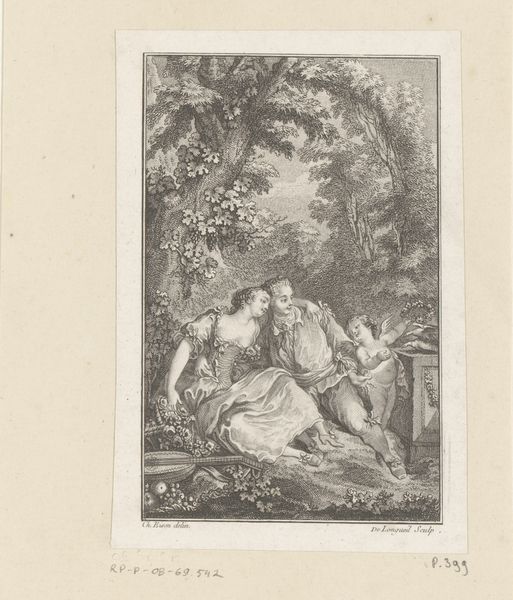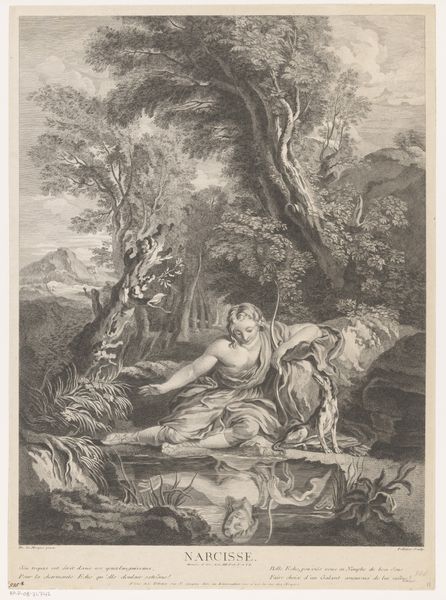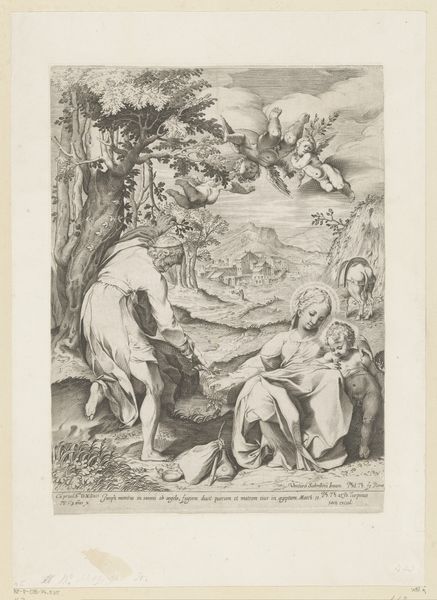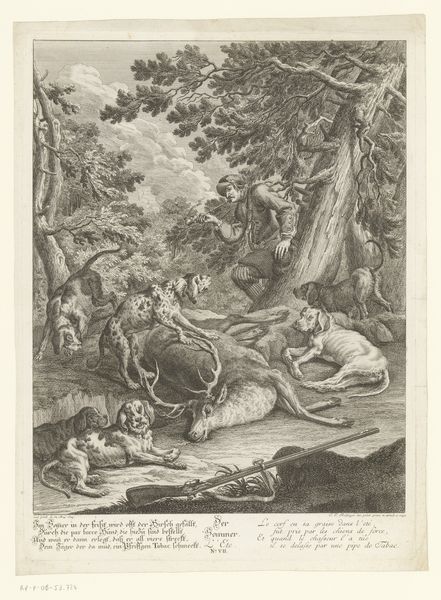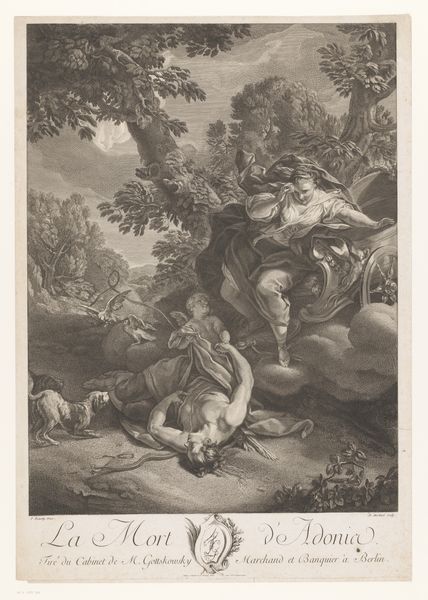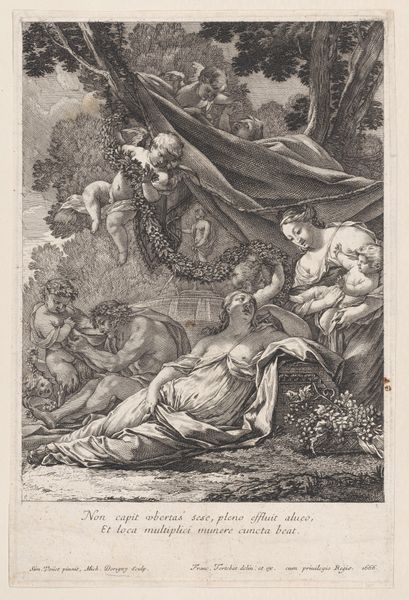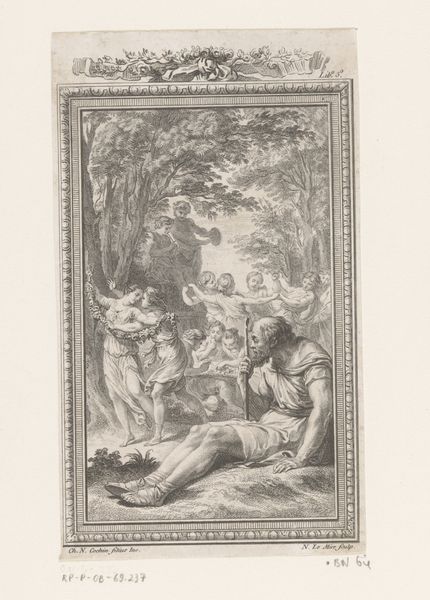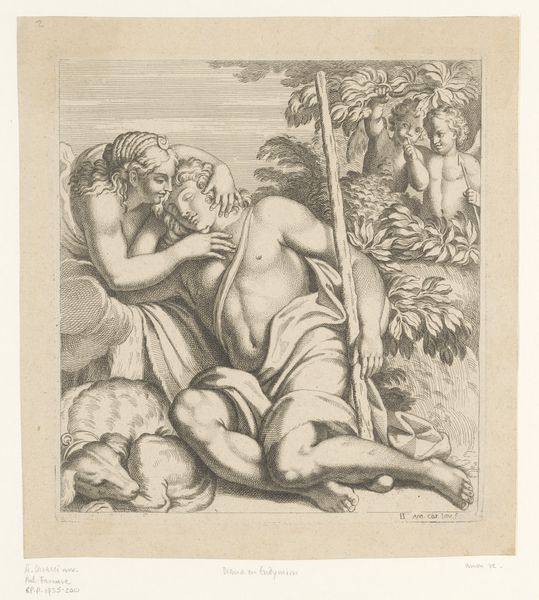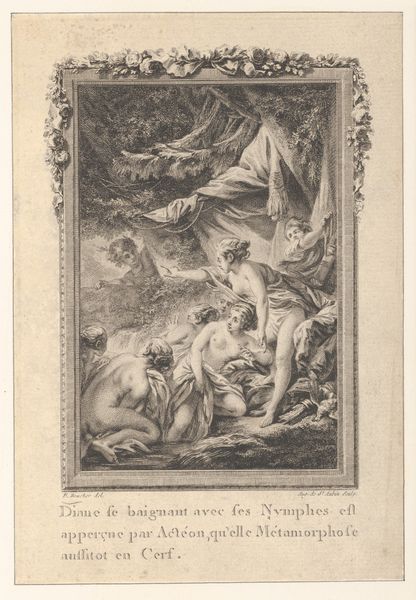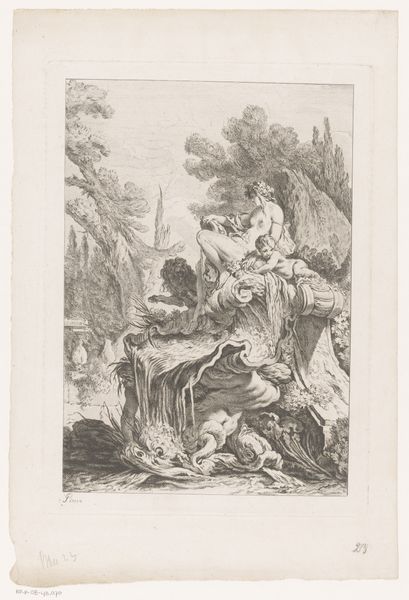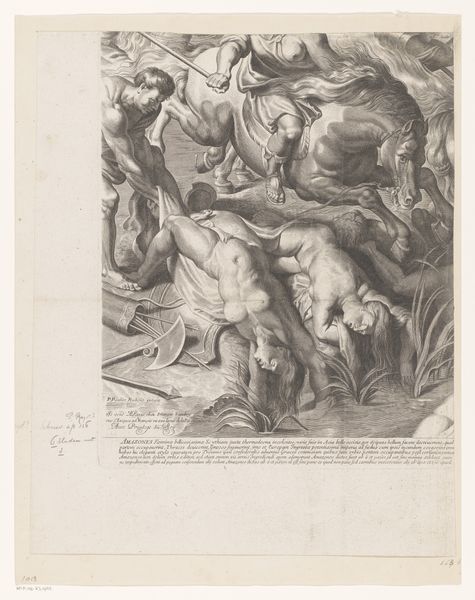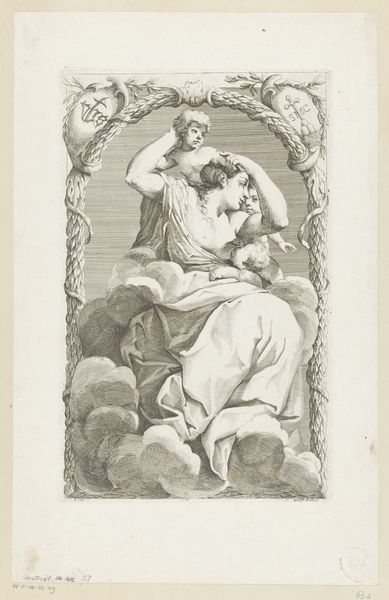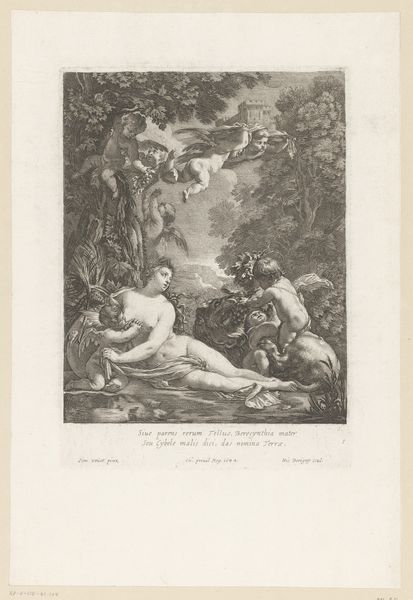
print, engraving
allegory
baroque
old engraving style
figuration
engraving
Dimensions: height 327 mm, width 258 mm
Copyright: Rijks Museum: Open Domain
Michel Dorigny created this print, Bacchanaal met slapende bacchante, in the 17th century. It depicts a scene of revelry with Bacchus, the god of wine, and his followers, amidst symbols of fertility and abundance. Note the sleeping bacchante, her languid pose a direct echo of classical depictions of Ariadne, abandoned on Naxos. Observe the wreath of vine leaves adorning Bacchus and his attendants. This symbol, deeply rooted in antiquity, signifies not only the god's dominion over wine but also themes of ecstasy, liberation, and the untamed forces of nature. This motif reappears across time, from ancient Roman mosaics to Renaissance paintings. Consider how such imagery evolves. The wreath, initially a symbol of divine power and celebration, can transform into a symbol of earthly pleasures and, perhaps, the dangers of excess. The enduring appeal of these Bacchic scenes lies in their ability to tap into our collective memory, evoking both a sense of primal joy and a cautionary awareness of human vulnerability.
Comments
No comments
Be the first to comment and join the conversation on the ultimate creative platform.
